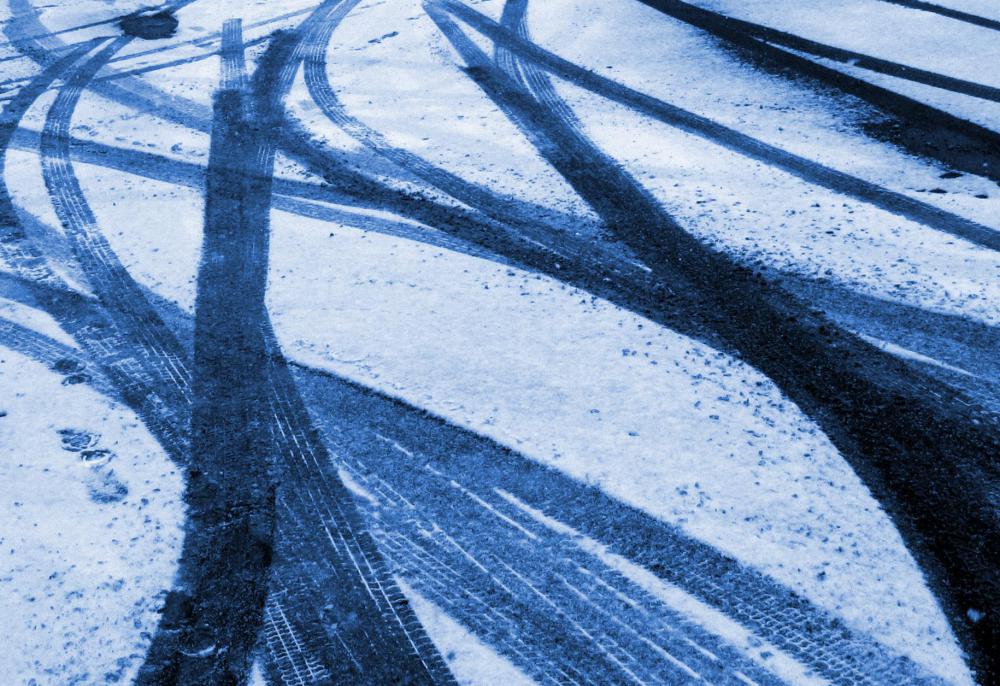At DelightedCooking, we're committed to delivering accurate, trustworthy information. Our expert-authored content is rigorously fact-checked and sourced from credible authorities. Discover how we uphold the highest standards in providing you with reliable knowledge.
What is Rock Salt?
Rock salt is the mineral form of sodium chloride, otherwise known as table salt. It's sometimes referred to as “halite,” especially when it is used industrially. This form of salt is available in most grocery stores and also in hardware stores, which stock it in massive bags for the purpose of keeping down ice on the roads in the winter. There are a number of uses for rock salt, ranging from making homemade ice cream to deterring trespassers.
The primary difference between rock and table salt is the size. Rock salt forms in very large, chunky crystals, as opposed to the small crystals seen in table salt. Like table salt, it also has an assortment of trace minerals that can have an impact on how it behaves chemically. Because of the large crystal size, rock salt is not usually used directly in cooking, since it takes a long time to dissolve.

This form of salt is mined from deposits that form underground. These deposits are usually the remains of inland seas that evaporated thousands or millions of years ago. In contrast, table salt comes almost exclusively from evaporation ponds that remove salt from seawater. Humans have been aware of deposits of rock salt for centuries, and when salt was still quite rare, wars were sometimes waged over the control of such deposits, because salt is so critical to many human activities.

Salt lowers the freezing point of water, so rock salt has historically been used to salt icy roads in winter to melt the ice away. Road salt, as it is sometimes called, has been largely phased out in favor of other materials such as sand due to concerns about salty runoff and the environment. Rock salt is also used in a wide variety of manufacturing applications in which salt is required. People sometimes use it as a form of humane ammunition to drive off unwanted animal and human visitors without hurting them, although a face full of salt can be potentially very dangerous, especially if pellets it get into the eyes.

At home, people often use rock salt when they make ice cream. When it's packed in with ice in an ice cream maker, it lowers the freezing point, allowing the ice cream to get colder. The salt can also be used in pickling and curing, and to make salt crusts for various food items. If it's going to be consumed, cooks should be sure to purchase food-grade rock salt, as some companies treat salt intended for roads and other uses with chemicals.
AS FEATURED ON:
AS FEATURED ON:















Discussion Comments
I'm doing a paper about rock salt and found this post very useful! I do have one more question though. I have heard of people ingesting rock salt to help them purge (throw up) their food. Is this possible? And are there any health concerns or problems that are accosiated with it? Thanks for your help!
What are some other differences between table salt and rock salt?
How long does it take for rock salt to form?
Is rock salt also sea salt?
Can rock salt keep down weeds?
Here's the problem: there is a horse arena which has not been used for years, so it is very dry. We are having it worked by someone with proper equipment, and it was suggested we add rock salt to hold moisture. Has anyone ever heard of this? Will it help? How much do you need to put down? Thanks for any information.
I am going to use rock salt so I did a little research on that and found that rock salt is another name for halite. Rock salt is normally caused by evaporation. The sea is a wonderful example due to its salty water. When the evaporation process happens the salt is too heavy and is left behind. You can find rock salt at dry lakebeds, inland marginal seas, and enclosed bays and estuaries in arid regions of the world.
Rock salt is used commonly for human consumption, rock salt is also applied to road beds in cold climates to help reduce the freezing point of water on the road, this allows it to not freeze-over zero degrees Celsius. Rock salt is important because, as mentioned above, it is used for human consumption also the formation of Rock Salt deposits from the world's oceans is the major mechanism through which the Ocean's can regulate their NaCl. (Sodium chloride, also known as salt, common salt, table salt, or halite) content, thereby not becoming "overly" salty.
Rock salt has a lot of uses nowadays.
Rock salt is actually a mineral called “halite”. Finely ground, it is what we know as table salt. It forms when salty water evaporates, such as sea water. It is usually found in dry lake beds, enclosed bays, and inland marginal seas. A large amount of the mined rock salt is used for human consumption.
It is also used on roads in cold climates to reduce the freezing point of water on the road or to melt the ice that is already on the road. The formation of rock salt deposits in our oceans is the way that the ocean can regulate the NaCl content and not become too salty. Rock salt is also used to make ice cream. When we use our ice cream makers, the rock salt is added to the ice that surrounds the can holding the ice cream to melt it.
The source of all salt is the sea. Some salt such as sea salt is made by evaporating sea water. Rock salt is mined from mineral deposits that were left behind by oceans.
Post your comments